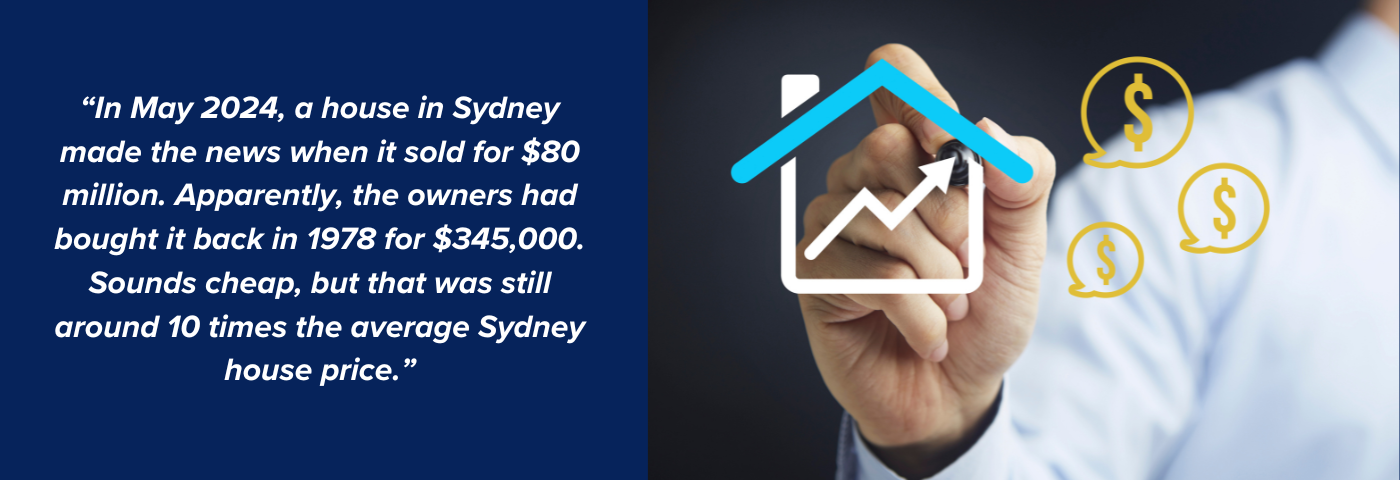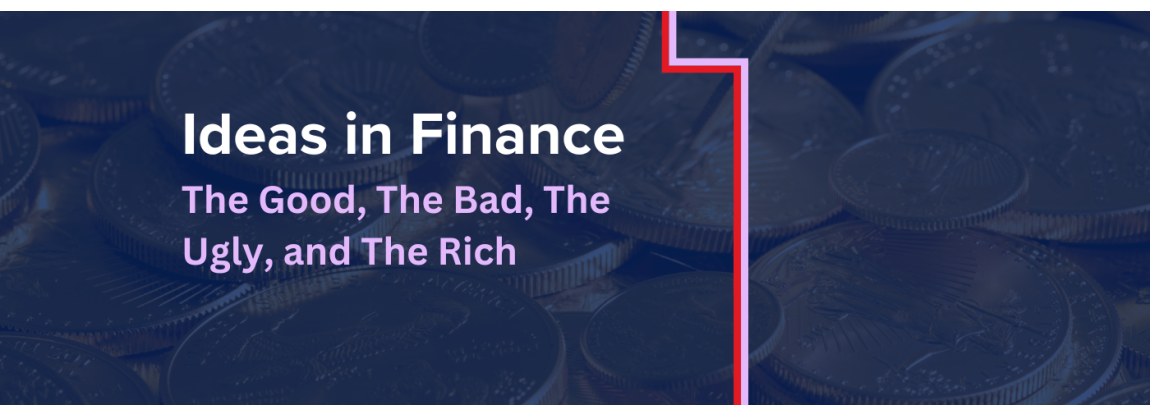The Good, The Bad, The Ugly, and The Rich
In the movie, The Good, The Bad, and The Ugly, which is set during the American Civil War (early 1860s), the three main characters are in pursuit of $200,000 in gold. We won’t tell you how the story ends. However, we will work out how much that gold would be worth today. In the movie, the gold is in the form of gold coins. There are eight bags full of these. At the time, gold was priced at around $20 an ounce. The coins look to be one-ounce coins, which means that there were about 10,000 coins in the 8 bags (i.e., $200,000 worth). Today, the gold price is about $2,400 (USD) per ounce. That means that the coins would be priced at $24,000,000!
The first thing that you notice when you look at a long-term history of the gold price is how little it changed, for years and years. One reason for this is that the gold price was fixed by the U.S. government until the late 1960s. The reason being that the U.S. dollar was convertible into gold. After World War II, the U.S. dollar rose to supremacy—which is the ‘reserve currency’ status that might or might not be waning, depending on who you talk to—with countries settling their international obligations in dollars, and dollars convertible into gold at a fixed price of $35 per ounce. This convertibility was the remnants of an international gold standard that had ceased to operate by the end of the 1930s. In 1971, the U.S. ended the dollar’s convertibility into gold. Exchange rates were gradually permitted to ‘float’ and the gold price was determined by the market. Possibly indicative of pent-up demand (or an artificially suppressed price), the price of gold soared, reaching nearly $100 (USD) per ounce by 1973. Coupled with the inflationary 1970s, it continued its upward march, reaching $615 (USD) per ounce in 1980, before settling into a long period of sideways inaction.
In May 2024, a house in Sydney made the news when it sold for $80 million. Apparently, the owners had bought it back in 1978 for $345,000. Sounds cheap, but that was still around 10 times the average Sydney house price. It was always a fancy property. Let’s look at how well the owners did, not in dollars, but in gold. In 1978, $345,000 bought 2,000 ounces of gold. This was actually a good time to buy gold, because it would rise in price dramatically over the next few years. Now, $80 million is 230 times $345,000. In dollar terms, therefore, the owners made 230X. However, $80 million now buys 22,000 ounces of gold. That’s just 11X the amount of gold the house was purchased for. Good, but not as great as 230X.
Let’s take a look at the case of a family friend of mine. His parents bought a Queensland coastal property for $50,000 (AUD) in 1983. If they still owned it, which they don’t, it could be sold today for around $1.4 million (estimate, it might get less). Now, $1.4 million is 28 times $50,000. A nice return, but let’s check the return in terms of gold. In 1983, $50,000 (AUD) could buy 100 ounces of gold. Today, $1.4 million buys 395 ounces (AUD). In gold, the house can now buy just 4X.


This is not to say, of course, that gold would have been a better investment than houses. The houses have returned more in terms of capital growth (so far). What it shows, though, is that most of the fabulous returns that people think they have earned have really been due to inflation of the currency, not an increase in the real purchasing power of their money. This is bad enough but it’s not the biggest problem. The biggest problem of all is that people have continued to be paid in dollars (not gold) while the value of dollars depreciated. In 1978, the average Australian wage was about $8,000 per year, which could buy 50 ounces of gold. In 2024, the average Australian wage is about $75,000, which can buy 21 ounces of gold. In gold terms, that house at the coast went up 4X (along with most other properties in the country) while the average wage halved. If Australian wages were paid in ounces of gold and remained at 50 ounces, the average wage in dollar terms would be $177,000, not $75,000.
This same exercise can be repeated for all manner of things. A good calculation to make is to take the stock market index and divide it by the gold price. The All-Ordinaries Index stands at 8,058 while the spot gold price as I write is $3,538 (AUD). The ASX index can “buy” 2.27 ounces of gold. Let’s look back to 1984 when the All-Ordinaries Index was about 700. The gold price in 1984 was about $400. The All-Ordinaries could buy 1.75 ounces in 1984 and 2.27 ounces in 2024 (a 30% return in gold terms vs a 10X return in dollars). The Reserve Bank has an index it built for the ASX with 1994 = 100 and the current 2024 value = 1,500. At the beginning of 1994, the gold price was about $390. The index constructed by the RBA could buy 0.25 ounces of gold. It can now buy 0.42 ounces (a 68% return in gold terms vs a 14X return in dollars). In gold terms, the performance of the Australian stock market has not been as good as it looks in nominal Australian dollar terms.
In the early 1860s, when The Good, The Bad, and The Ugly is set, the average American worker earned about $500 a year. That could buy 25 ounces of gold. In 2024, the average American wage is about $59,000. That can buy 25 ounces of gold.
Activity
When did the stock markets, real estate, and anything else you wish to consider, hit their all-time highs in terms of the amount of gold they could purchase? An advanced version of this activity is to explore the effect of the ups and downs in the gold price. For instance, gold did almost nothing between 1984 and 2004.

